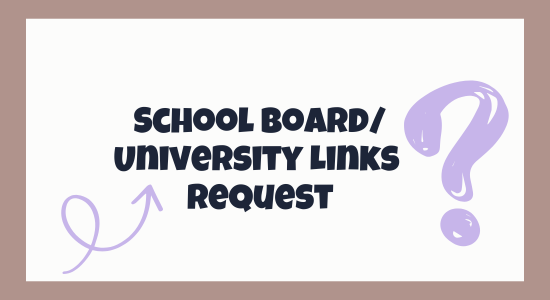
The traditional model of education, heavily reliant on theoretical knowledge, is increasingly being challenged by the demands of the modern workforce. Employers seek candidates not only with academic credentials but also with practical skills and real-world experience. This is where internships and practical experiences play a pivotal role, acting as a bridge between the classroom and the professional world.
The Value of Internships and Practical Experience
Internships and practical experiences offer students a unique opportunity to:
- Apply theoretical knowledge: Students can translate classroom learning into practical scenarios, gaining a deeper understanding of concepts and their real-world applications.
- Develop essential skills: Internships provide a platform for students to develop critical skills such as problem-solving, communication, teamwork, and time management, all highly valued by employers.
- Gain industry exposure: Exposure to different industries and work environments allows students to explore career paths, identify their interests, and make informed decisions about their future.
- Build a professional network: Internships facilitate connections with industry professionals, creating valuable networks that can lead to future job opportunities and mentorship.
The Gap Between Academic Learning and Real-World Skills
For decades, the traditional education system has focused on theoretical knowledge. Students spend years studying concepts, theories, and principles, but when they enter the job market, many struggle to apply what they've learned. Employers consistently report that graduates lack critical workplace skills such as problem-solving, teamwork, and adaptability. This gap between academic knowledge and practical application has created challenges for both students and employers.
According to the National Association of Colleges and Employers (NACE), 91% of employers prefer candidates with work experience, and 56% favor those who have completed an internship. Despite this, many students graduate without real-world experience, making it difficult for them to transition smoothly into the workforce. How can we minimise this gap, one would question? The answer lies in internships and practical experience.
The Consequences of Lack of Practical Exposure
Without internships and hands-on experience, students often find themselves unprepared for the realities of their chosen professions. The consequences include:
- Limited Employability: A 2023 LinkedIn survey found that 80% of job postings require prior experience, leaving fresh graduates at a disadvantage.
- Skill Mismatch: A McKinsey report highlights that 40% of employers struggle to find candidates with the right skills.
- Lower Confidence Levels: Many graduates lack the confidence to handle workplace challenges due to their inexperience.
- Longer Job Search Periods: The lack of practical exposure leads to prolonged job searches, affecting both career growth and financial stability.
A real-world example of this issue is the IT industry. Many computer science graduates learn programming languages in their coursework but struggle with debugging, collaboration in teams, and working with version control systems like Git—skills that are crucial in a professional setting. In contrast, students who complete internships in tech companies enter the workforce with an understanding of real-world software development processes.
The Power of Internships and Practical Experience
Internships and hands-on learning opportunities provide students with valuable exposure to the working world. Here’s how they make a difference:
1. Bridging the Theory-Practice Gap
Textbooks teach principles, but internships teach application. For example, a marketing student might learn about consumer behavior theories in class but only understand their real-world impact when analyzing live customer data during an internship.
Case Study: A study by the National Survey of Student Engagement (NSSE) found that students who participated in internships reported higher levels of engagement, critical thinking, and problem-solving abilities compared to those who only relied on coursework.
2. Enhancing Employability
Internships provide hands-on experience, making students more attractive to employers. According to NACE, 70% of interns receive a full-time job offer from the company they interned with, showcasing the strong link between internships and job placements.
Case Study: In 2022, Google’s internship program reported that over 80% of its interns transitioned into full-time roles. This proves that companies value candidates who understand their work environment and can contribute immediately.
3. Building Professional Networks
Internships connect students with industry professionals, helping them establish valuable relationships. Networking plays a crucial role in job hunting, with studies showing that 85% of jobs are filled through networking rather than online applications.
Example: A finance student interning at a major bank gets the opportunity to meet industry leaders, attend professional events, and even secure a mentor who can guide their career.
4. Improving Soft Skills
Soft skills like communication, teamwork, and time management are difficult to learn from textbooks. Internships expose students to real-world scenarios where they must work with teams, meet deadlines, and handle workplace challenges.
Case Study: A study conducted by the Harvard Business Review found that students who completed internships showed a 30% improvement in soft skills, compared to those who only attended lectures.
5. Providing Industry-Specific Skills
Internships help students gain industry-specific skills that universities may not cover in depth. For example:
- Engineering students learn how to work with machinery and industry software.
- Medical students gain hands-on experience in hospitals through clinical rotations.
- Journalism students get real-world reporting experience in newsrooms.
6. Boosting Confidence and Independence
Work experience helps students gain confidence in their abilities. A Deloitte survey found that 67% of students who completed internships felt more prepared to handle real-world challenges than those who didn’t.
Example: A law student interning at a legal firm learns how to draft legal documents and communicate with clients, making them more prepared for their first full-time job.
Implementing Practical Experience in Education
Educational institutions can play a vital role in ensuring students gain practical experience. Here’s how:
1. Making Internships a Mandatory Part of the Curriculum
2. Partnering with Industry Leaders
3. Encouraging Hands-On Projects and Simulations
4. Promoting Apprenticeships
5. Leveraging Online Platforms for Virtual Internships
Internships and practical experience are no longer optional—they are essential for career success. With employers prioritizing work-ready candidates, students who invest in internships gain a competitive advantage in the job market.
The education system must evolve to include more experiential learning opportunities. Universities should prioritize internships, companies should create structured training programs, and students should actively seek out hands-on learning experiences. By doing so, we can bridge the gap between academic knowledge and real-world application, ensuring graduates are prepared for the workforce.
Final Thought: If you're a student, don’t wait until graduation to gain experience. Seek internships early, build your skills, and step into the professional world with confidence!
0 Comments
-
Comments will be injected here via JS












Post a Comment